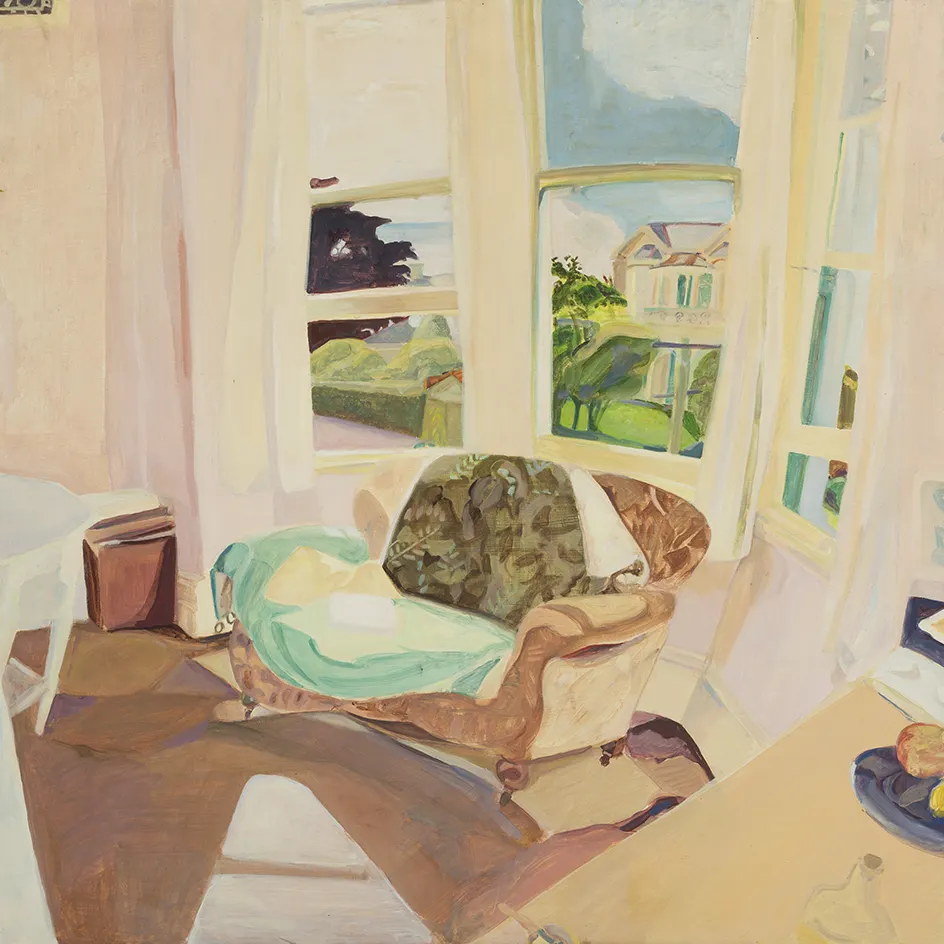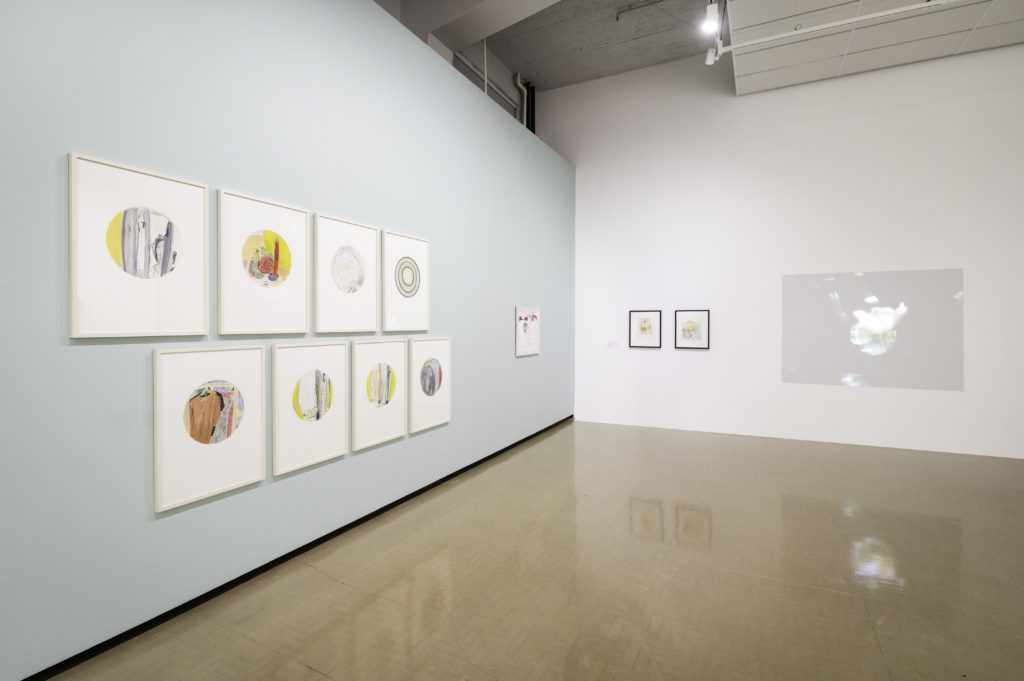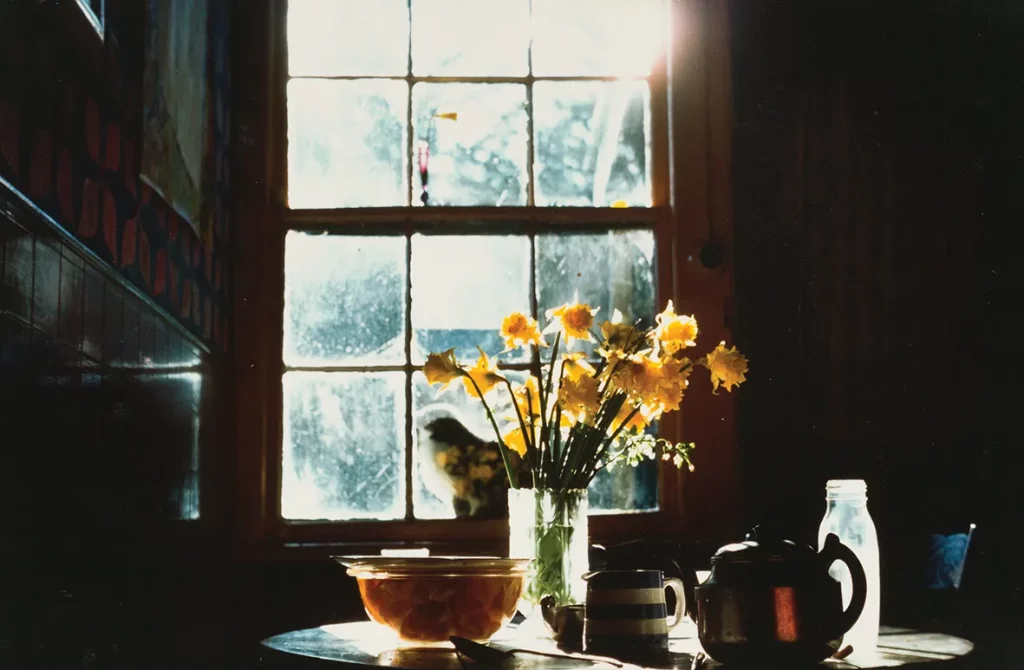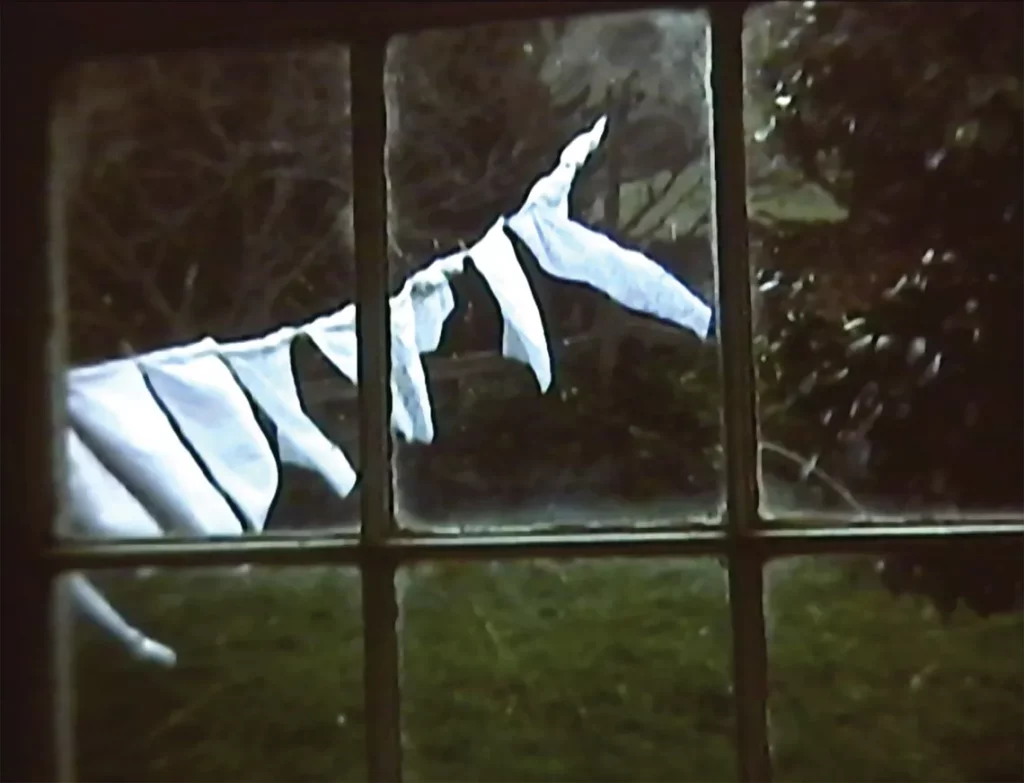Words by Maggie Tweedie. Originally published on ISLAND.com
It’s both effortless and impractical to follow the work of Joanna Margaret Paul. Much like the words which emerge throughout her paintings, she is ever evolving. Imagined in the Context of a Room, gathers a breadth of works, spanning decades of her life from the early 70s to the 2000s. The show follows both a chronological and geographical rhythm throughout, uncovering 30 years worth of material sprawling across a broad array of mediums. Which is also accompanied by a book of the same name.
Joanna Margaret Paul never committed to one form, willfully crafting a career as a serious artist on her own terms. She looked closely at her own domestic life as a subject, and worked across many mediums. Paul’s earlier works were developed in Ōtepoti Dunedin, prior to having children. Born in Hamilton in 1945, she came from a more liberal artistic background and went to Elam in the late 60s learning from some of the country’s finest contemporary artists.
She was disinterested in deliberate perfection, instead drawn to what is natural. Her gaze captured the ordinary moments of life in colour. Paul’s work often asked the viewer to observe a new way of looking at what was and is. Rather than contriving the perfect still life, she instead paid close attention to the natural arrangements that occurred within her own home. Her approach was distinctive and unique, and she stood out from other artists of her generation.

The exhibition was jointly curated by Dunedin Public Art Gallery’s Lucy Hammonds and Lauren Gutsell. Together the two worked with The Sarjeant’s Greg Donson, who knew the artist when she lived in Whanganui. The three have worked together on a book, reflecting on Joanna’s extensive art works. The publication, Imagined in the Context of a Room, helped shape the show into focus. The retrospective opened in Ōtepoti back in August 2021 but the work started 18 months prior to that. After its lifespan at City Gallery the show will open in Whanganui at The Sarjeant. An extensive showing in North and South.
Hammonds tells me, “people are surprised at the breadth of Joanna’s work” and so it was essential they focus on the multidisciplinary nature of her practice. She notes how prolific Paul was as an artist, constantly making and exhibiting her work throughout her career. She often created beautiful custom frames, painted unusual colours, and hung her art in unconventional ways. “The way she represented her work was intentionally disruptive”.
My favourite piece in the retrospective is called Jerusalem dormitory (pictured below). Its surrealist qualities, vibrant pastels and skewed angles really drew me in.

Visual Poetics
Throughout the show it’s clear the environment shapes the way Paul engages with her art-making practice. Beginning with more traditional media, such as painting, displayed alongside more conceptual and experimental works. The retrospective showcases links to the artist’s motifs. Clearly developing a repeated visibility amongst her works across the gallery space. In no way does she deliberately construct settings to paint, photograph or sketch. It’s often the overlooked, sly glimpses that are either cut off or absent. There’s a deep consideration for the way that we look at things but don’t choose to see.
Many of Paul’s works look to the corners of rooms, the absence of spaces and the quietness of white. Elements such as these are woven through works that take us on a journey from home in Ōtepoti all the way to Barry’s Bay, to Te-Whanganui-a-Tara Wellington and, later, Whanganui. Quietly edging the fabric of the artist’s daily life and her routinely influence on a creative practice. When Paul’s family visited the exhibition at City Gallery, many resonated with familial objects in the art work. A simple jug reminding them of parts of childhood once forgotten.
The curatorial team dedicated much of their time to research and building relationships with Paul’s family. With the support of her family, they were able to include many works in the exhibition that have never been exhibited before, and acquire rare examples of Paul’s original photography for the permanent collection held at Dunedin Public Art Gallery. An important milestone to Gutsell, Hammonds and Donson who wanted to showcase her far reaching career.
Joanna Margaret Paul—The Maker
It’s no wonder contemporary artists today are drawn to her work. Imagined in the Context of a Room, at times feels like a gentle campaign for feminism. From flip books of poetry, to black lined sketches of Whanganui buildings, the fluency of her creativity is familiar. The commitment to record life’s daily happenings, whether interesting or dull, and Paul’s reluctance to weigh into how others will see it, is refreshing.
The blend of Paul’s influence is interesting to me. A young generation of contemporary artists fell in love with her experimental films. While another generation of people predominantly know the artist for her painting and poetry. Across the walls of City Gallery we are shown images of her children, family and friends. Notedly without their faces shown, instead the artist’s focus is on gestures and the way each body moves. In ways it’s a more intimate way to see a subject you know well. Where they are recognisable to you without seeing their face in view.
The composition of Paul’s photos are an extension of space. Her masterful way of capturing light is evident in the exhibition’s central photo below. Here we see a vase of pottery, a lived in tea pot and a dwindling bunch of daffodils. A natural grouping of domestic life which extends through her filmed work.

Windows and obscuring one’s view continues. A video of washing drying on the line may sound uninspiring but seeing the projection on the white wall on a much larger scale, feels rather expansive. It’s as if you are in Paul’s home looking through the window outside with her. She didn’t take a load of footage at home and cut, edit and splice together after filming. Instead it was all edited on camera, each shot intentionally filmed with care.

Like many women artists of her generation, Paul’s work has been largely overlooked in Aotearoa New Zealand art history books. However both the publication and exhibition have successfully reinserted Joanna Margaret Paul’s name into contemporary art conversations. An achievement the three curators are immensely proud of. Paul, as an artist, was endlessly fascinating. “Her practice was a manifestation of her experiences as she moved through the world. She broke her own rules in her work.”—Lucy Hammonds.
It’s clear the curators are deeply invested and have individually fallen in love with Paul’s art. Gutsell was pregnant at the time of the exhibition in Ōtepoti and felt a closeness to Paul. Reflecting on her time navigating motherhood as an artist. When I asked her what she was proud of she didn’t hesitate, “Joanna had full faith in what she was doing and didn’t waver from that, being able to assert those things into the world is what I’m proud of in terms of the show”.
The exhibition ends at City Gallery Wellington on 6 February 2023.
